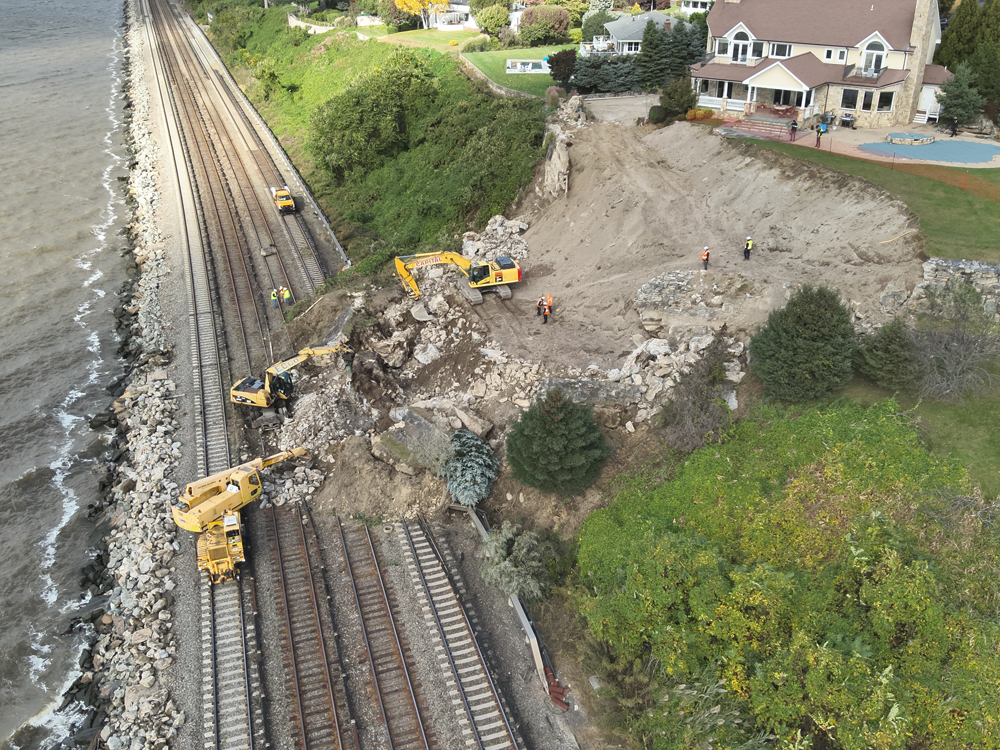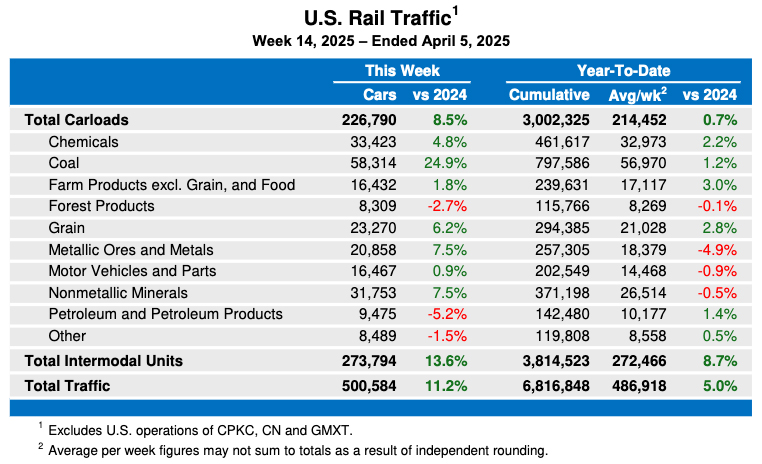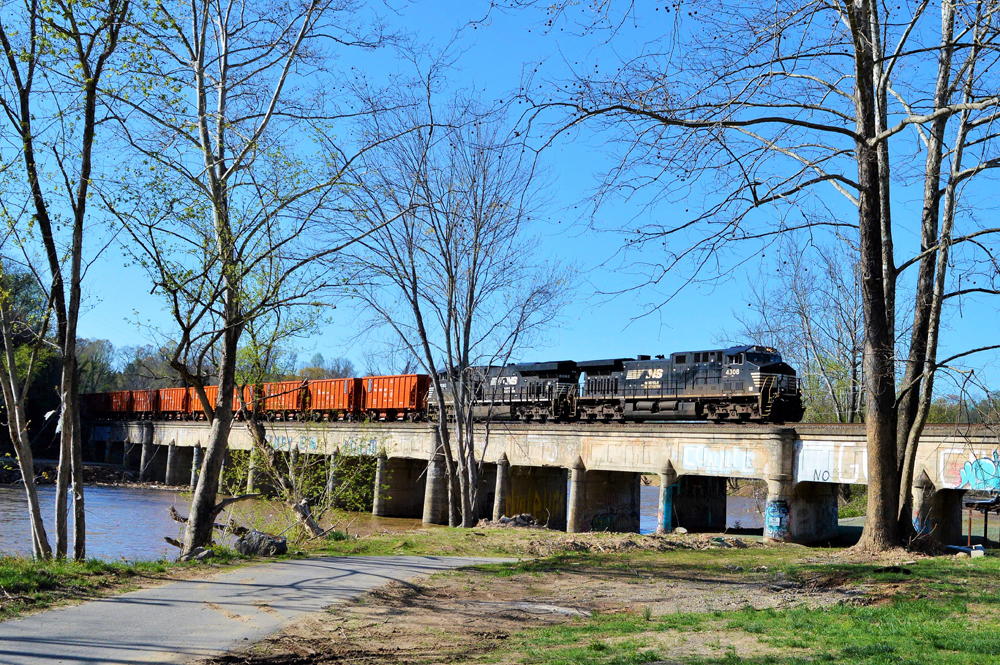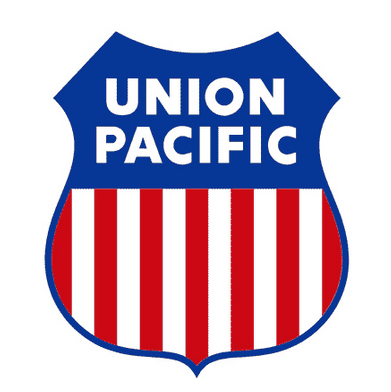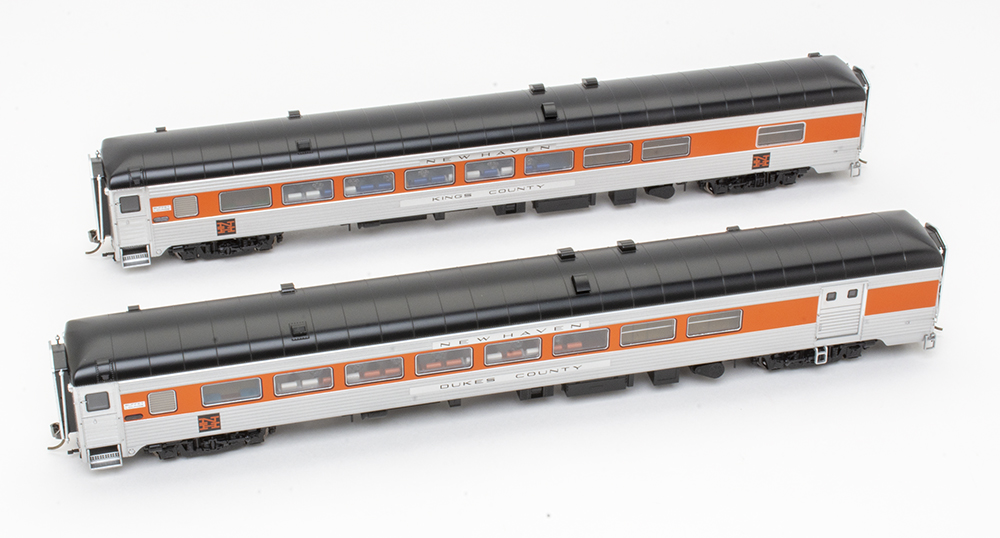
Rapido Trains HO scale P-S New Haven County-series baggage-lounge cars: Rapido Trains has been a great friend to New Haven passenger train modelers, providing icons such as the EP-5 electric passenger locomotive, EMD FL9s, and an ever-growing fleet of HO scale NH Pullman-Standard stainless-steel and lightweight Osgood-Bradley passenger cars. The most recent additions are the Pullman-Standard County-series baggage-lounge and baggage-parlor-lounge cars. The injection-molded plastic and metal passenger cars feature extensive detail and come configured to match specific car interiors.
The prototype – Rapido New Haven County cars
In 1948, the New Haven took delivery of 20 streamlined combination baggage-lounge cars as part of its postwar passenger modernization program. The cars were delivered in several configurations, each tailored to the needs of particular trains on the railroad’s routes.
Lightweight combines in the postwar era were rare. Most railroads that did have them used them to combine baggage and crew dormitory space. In contrast, the New Haven’s streamlined combines offered a unique mix of first-class accommodations in a single car.
The New Haven split the 20 County-series cars into two distinct batches, including 10 baggage-lounge cars and 10 baggage-parlor-lounges.
As delivered, the baggage-lounge cars featured an 18-foot baggage compartment, a 31-seat lounge with buffet/bar service, a pair of day roomettes, and a single drawing room. Two of this set of cars swapped some of the lounge chairs for four card playing tables with booth seating and glass partitions. This change increased the lounge seating capacity to 32.
Four of the County baggage-lounges were ordered for the New Haven’s high-profile Merchant’s Limited and Yankee Clipper New York-to-Boston trains and included radio telephone service. The telephone system replaced one of the car’s two restrooms with a single phone booth and an accompanying compartment for an operator. While a good marketing idea, the radio telephones proved to be unreliable, and New Haven removed them from the cars in the mid-1950s.
The second set of 10 cars were delivered as baggage-parlor-lounges. These still included the day roomettes, the drawing room, and the buffet/bar, but had a smaller 11-seat lounge and added a 14-seat parlor section.
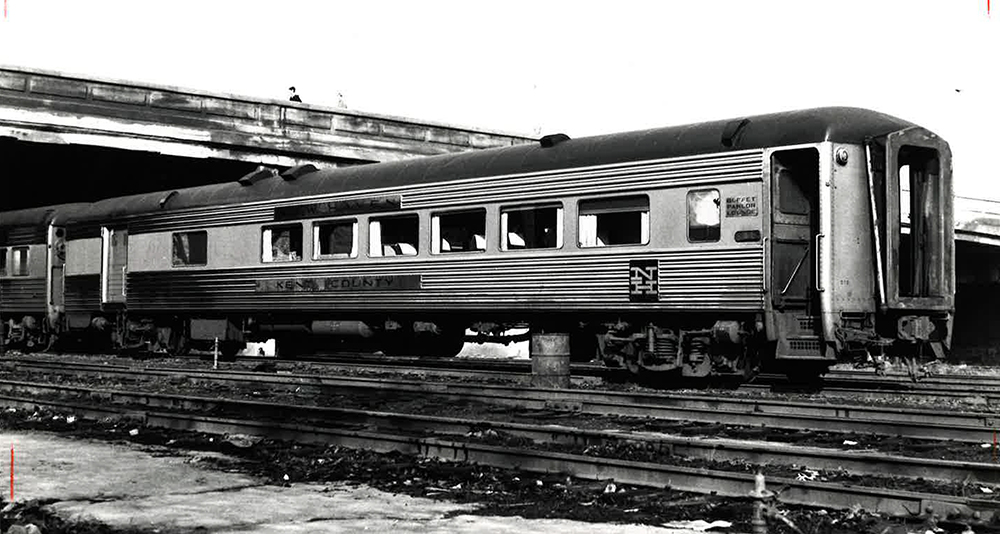
Like New Haven’s other postwar streamlined cars, these were built with Cor-Ten steel frames and stainless-steel sides and ends with painted window panels. As delivered, the cars featured stainless-steel skirts. However, the New Haven removed this feature on most of its streamlined cars in the late 1950s to make maintenance easier.
Several of the cars underwent significant modifications during their service lives. Most notably, six of the baggage-lounge cars had their baggage compartments replaced in the early 1950s to add 2 more drawing rooms. All four telephone cars received this modification.
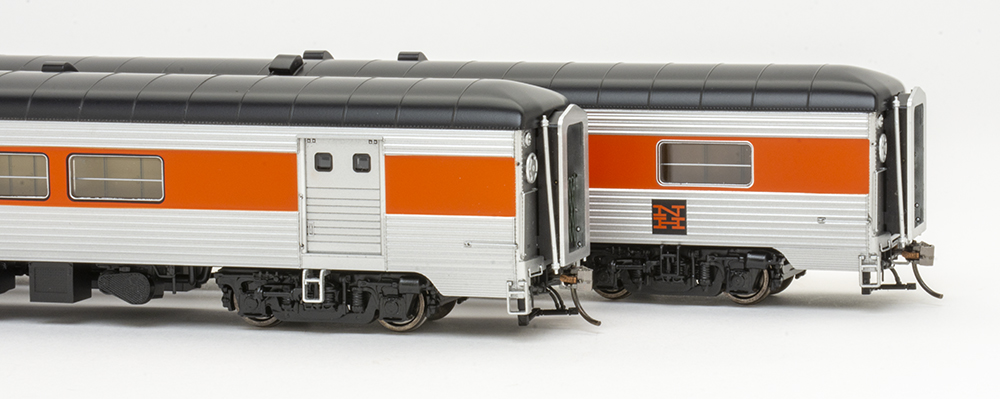
19 of the 20 County cars served the New Haven until its merger into the Penn Central system in 1969. Six survived into Amtrak service.
A wealth of detail – Rapido New Haven County-series cars
For those who already own some of Rapido’s New Haven passenger cars, you will not be disappointed by the details and appointments applied to the County-series models. Rapido offers both the baggage-lounge and the baggage-parlor-lounge. In addition, it offers versions of the telephone-equipped cars before and after that equipment was removed, as well as baggage-lounge cars that had their baggage compartments replaced with the two additional drawing rooms.
For this review, I used a model of Dukes County, featuring a standard baggage-lounge floor plan, and Kings County, a former telephone-equipped baggage-lounge with modified with two additional drawing rooms. Kings County was one of the two baggage-lounge cars the New Haven had assigned permanently to its New York-to-Boston Yankee Clipper. Both models were decorated in McGinnis paint schemes and without skirts, making them appropriate for 1957 to the end of the New Haven in 1969.
The New Haven Railroad Historical and Technical Association’s publication Shoreliner, vol. 43, issue 1, features a detailed article by Wayne D. Drummond about the New Haven’s County-series cars, complete with builder’s diagrams and floor plans for many of the variations. Both cars matched the major dimensions of the drawings found in the article.
The Rapido models feature prototypical interiors, including separate chairs, ashtrays, and compartments. The Dukes County car featured the as-built baggage section and doors and included the 1952 interior update to the lounge section. In that update, the New Haven replaced two of the chairs for tables, reducing lounge seating from 31 to 29, which is appropriate for car from 1957.

Kings County reflects the 1953 conversion by Pullman-Standard of the baggage area into additional drawing rooms. This program removed the baggage doors, replacing them with two windows on the drawing room side and one window on the corridor side of the car. The body and interior of the model matched the railroad’s modification drawings for these cars.
Amazing Interiors
The New Haven often provided unique appointments to a car based upon its assigned service. For the 20 County-series cars, the New Haven ordered them with four different interior color schemes, with 5 in each color. My two models came with different interior colors, so I asked Rapido Trains about it.
It turns out Rapido had access to the original builder’s orders, so it matched the New Haven’s interior colors to each of its models at the factory, including the flooring and lounge chair upholstery.


I found this detail to be an amazing special touch, and I didn’t notice it until I started comparing the cars to historic color photographs.
Removing the shell
I will eventually be adding figures to my cars, which requires removing the shell. Since I needed to do so anyway for the photographs, I got a bit of practice at it.
Unlike Rapido’s 8600 series New Haven coaches, where the shell is held by tabs and latches only, the shell of the County-series car is also held to the chassis at the end by the coupler screws, much like Rapido’s NH diners. I laid the car carefully on a foam cradle, then removed the coupler screws and boxes from the model.
With the screws removed, I spread the sides of the shell from the chassis with toothpicks to release the four locking tabs. I then was able to slip the shell off the car by gently pulling upward on the trucks.
Even though model comes fully assembled, it does include a small bag of modeler-applied corner stirrups. As noted in the instructions, the New Haven removed these when it removed the skirts from the cars. Since both of my models had the skirts removed, I didn’t need them.
Fit and finish
Our samples came decorated in the McGinnis red-orange paint scheme with a black roof. The paint was neatly applied with even coverage, particularly the orange window band. I also liked the simulated stainless-steel finish on the models.
There isn’t much printing on the car, but what there is, including the delicate car numbers on the ends, was neat and legible. The cars also include the correct ‘Buffet-Lounge’ placards by the vestibule doors.
The four metal wheels in each detailed 41-BNO-11 General Steel Castings truck collect track power for the light-emitting diode (LED) interior lighting. The lighting system features a capacitor for flicker-free operation. You can turn the lights on and off in the car by using the included magnetic wand and waving it across the roof in the middle of the car.
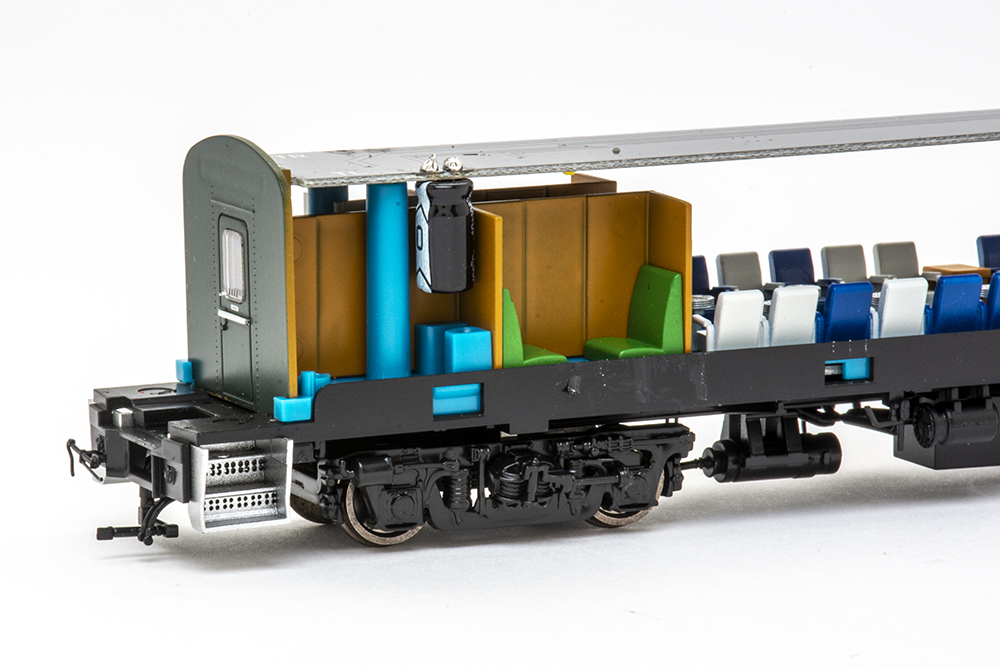
Our sample model rolled freely, so much so that Cody and I had to be very careful when photographing the model in the studio, as it wanted to wander off the table on its own.
The baggage-lounge cars will negotiate 22″ or greater curves when coupled to other similar cars. (I tested it with a couple of Rapido’s 8600-series coaches.) I also ran one of the cars on an 18″ radius curve on the Beer Line. While it made it through the curve fine, according to the manufacturer’s directions, for use on this radius one or both couplers should be replaced with a long-shank coupler.

I, for one, am very pleased with the model. Rapido has done an excellent job capturing the look and character of this uniquely New Haven passenger car. And much like the details found on the interior of its NH P-S diner released several years ago, I’m blown away by the floor plan configurations available for these cars and the matching color schemes.
If you are New Haven, Penn Central, or even early Amtrak fan, you’ll enjoy having one of these cars on your railroad. Good work Rapido!
Facts and features
Price: $129.95
Manufacturer:
Rapido Trains Inc.
500 Alden Rd., Unit 21
Markham, Ontario L3R 5H5
rapidotrains.com
Era: 1957 to 1969 (as decorated)
Road names: New Haven as delivered (1948-1955 Hunter Green with skirts), New Haven McGinnis scheme (1957 to 1969 no skirts), Penn Central, and Amtrak phase 1; assorted car names per scheme.
Features:
• Body-mounted, rust-brown-colored Macdonald-Cartier metal knuckle couplers at correct height
• Fully detailed interior
• Metal wheelsets on plastic axles, correctly gauged
• Sprung diaphragms
• Separate, factory-applied metal grab irons
• Track-powered, constant light-emitting diode interior illumination
• Weight: 6.7 ounces (nearly perfect for NMRA Recommended Practice 20.1)






